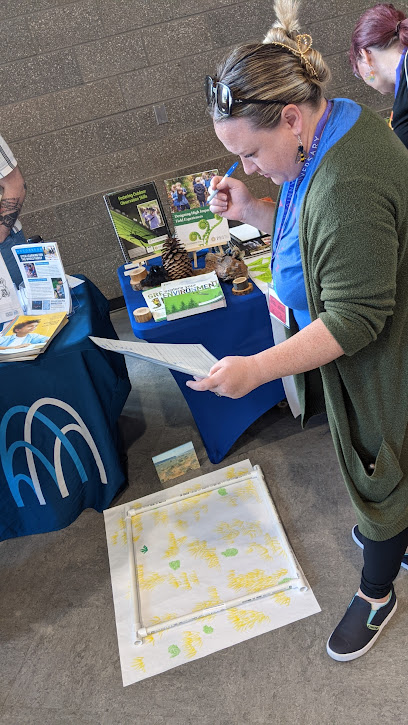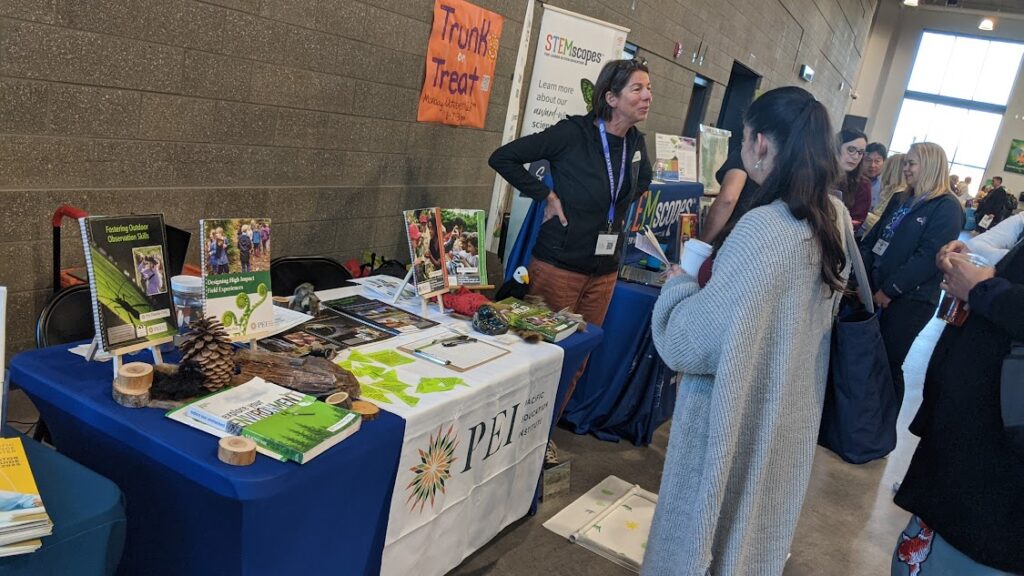Visitors to PEI’s table at the Washington Science Teachers Association (WSTA)/ E3 Washington conference in October were inspired to explore free resources and experiment with a hands-on activity. Many tried a mock quadrat survey of two sageland areas, one with cheatgrass and one without.
“Participants loved the idea of teaching students to use the quadrat with the pretend landscape before taking them out to the field,” says Megan Rivard, PEI’s Associate Director, Columbia Basin & Coast. “They were also encouraged by our do-it-yourself versions of the quadrat square, made of PVC pipe and elastic cord, which sparked many conversations about funding issues and the need for creativity in finding

resources.”
Rivard and Amy Dawley, PEI’s Eastern Washington FieldSTEM Coordinator, attended the WSTA Conference to share information and answer questions. They provided details about FieldSTEM support forschools and the Green Jobs and YESS programs through informal conversation with statewide district educators who stopped at PEI’s table.
This year, the annual event was in Liberty Lake, with a focus on three strands: three-dimensional science, student learning and inclusion, and place-based learning. Aside from hosting a table, PEI co-facilitated a pre-conference field experience with the Spokane Audubon Society and Turnbull National Wildlife Refuge (NWR).
“Participants loved the idea of teaching students to use the quadrat with the pretend landscape before taking them out to the field.They were also encouraged by our do-it-yourself versions of the quadrat square, made of PVC pipe and elastic cord, which sparked many conversations about funding issues and the need for creativity in finding resources.”
– Megan Rivard, PEI’s Associate Director, Columbia Basin & Coast
Turnbull NWR provides visitors with opportunities to interact with Channeled Scablands and wetlands where birds and other wildlife thrive. The team offered a waterfowl identification activity that segued into a bird walk and a sound mapping activity. “We put new skills into practice,” says Dawley.
It was Dawley’s first time attending the statewide conference, and she attended sessions as a participant. Highlights included a workshop on phenomena-based sensemaking through visual data and pattern recognition. “I learned that graphs can be fun,” she says.
Discussions around Washington State Science Learning Standards yielded rich conversations with grade-band educator groups, Dawley notes. Another workshop explored ways to use discrepant events in science classrooms. “Think real-time phenomena that elicit questions, such as vacuum-collapsing aluminum cans, sunlight-starved germination, and chemistry in color,” she explains.
WSTA is a statewide organization that provides awards, scholarships, professional development and resources for science educators.
